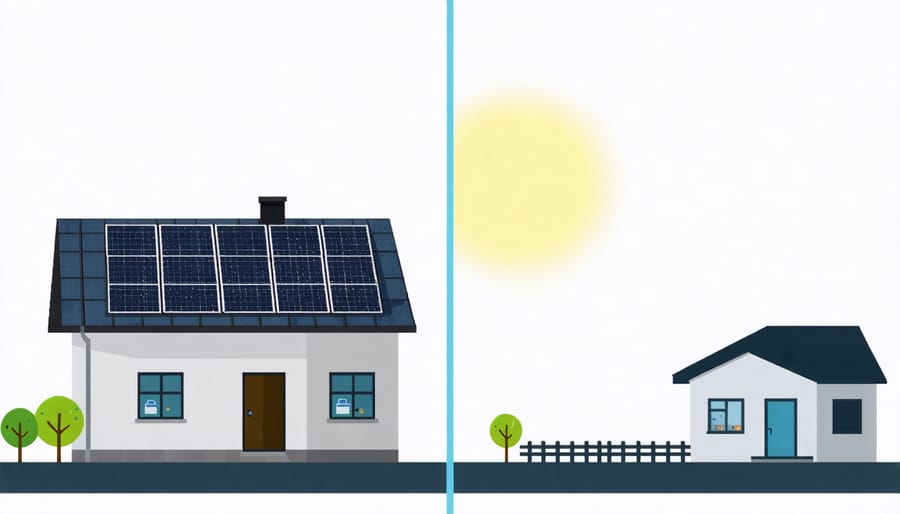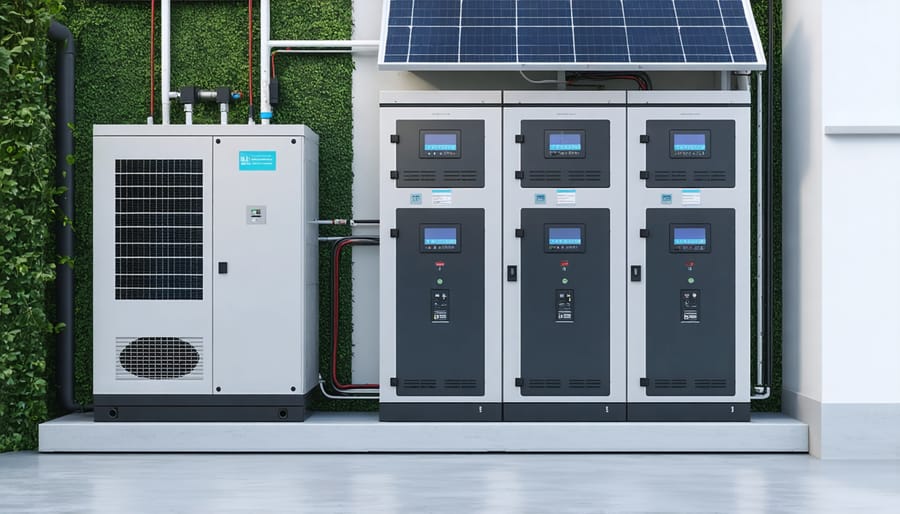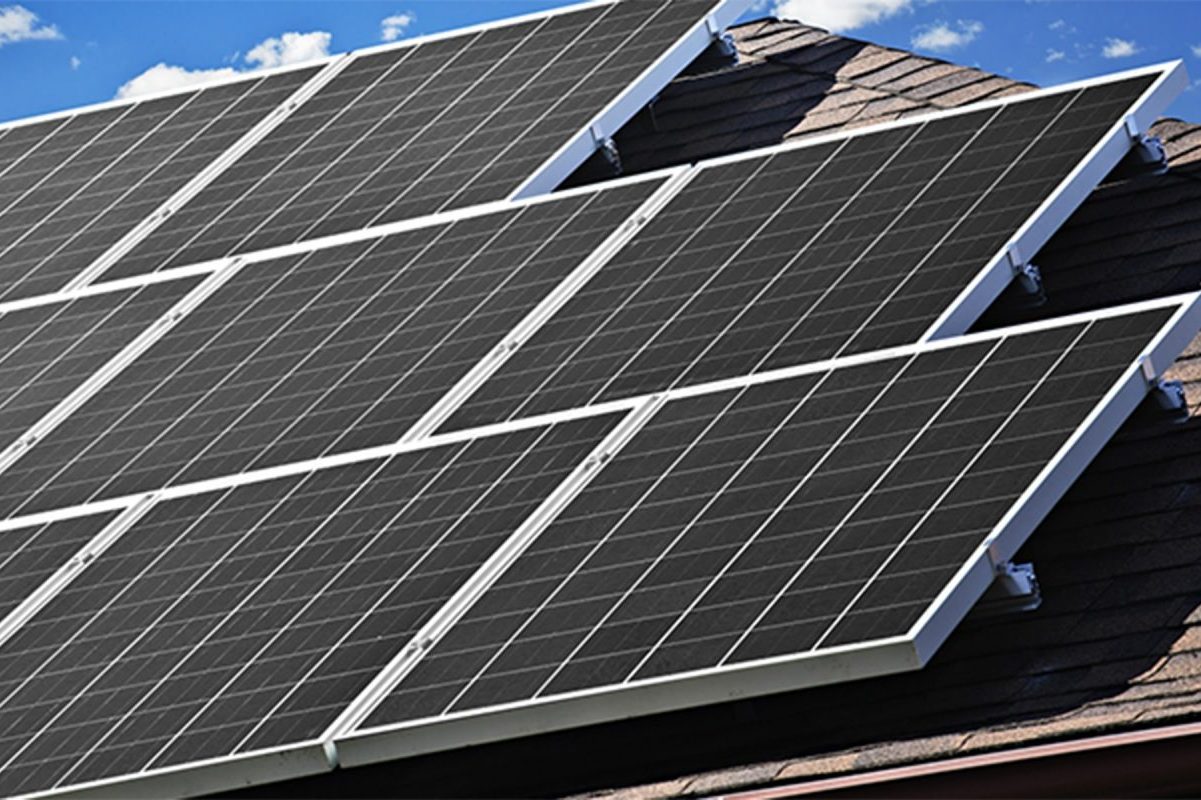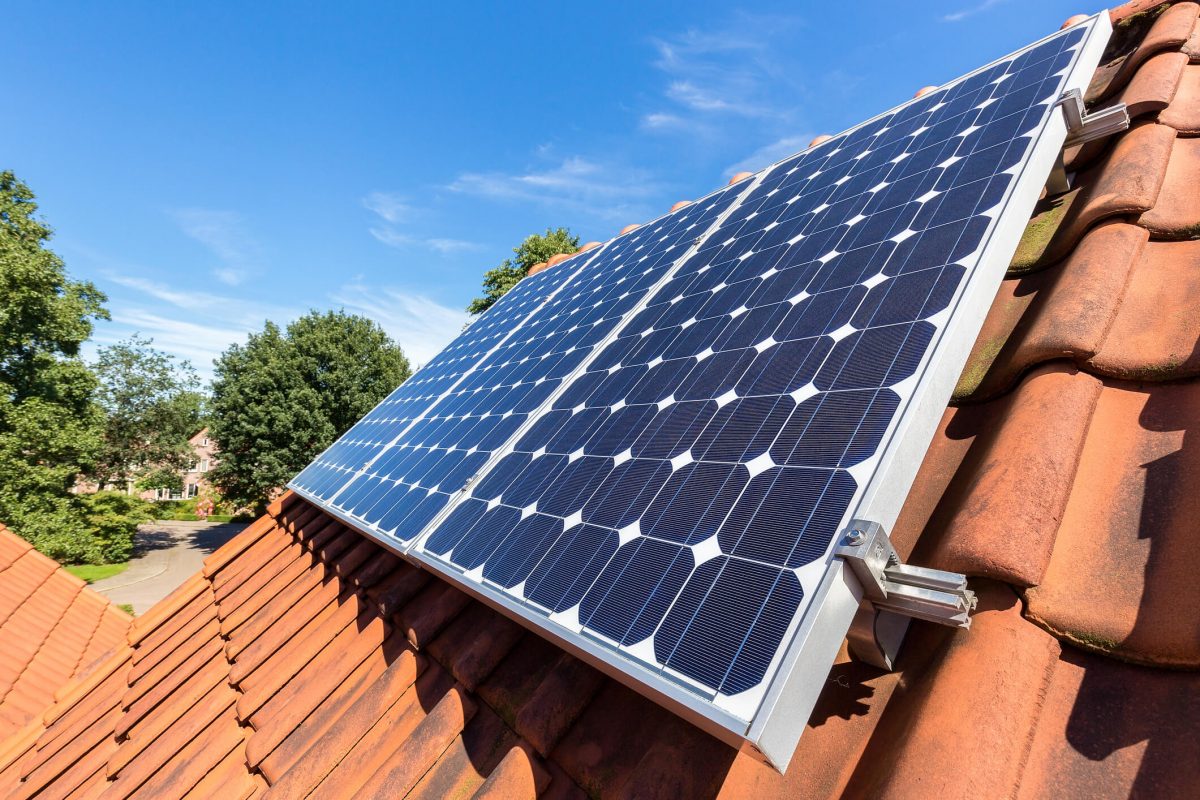Transform your home into an energy fortress with a solar inverter battery backup system – the ultimate solution for uninterrupted power and energy independence. When the grid fails, your lights stay on, your appliances keep running, and your life continues without disruption. Recent advances in battery technology have made these systems more affordable and efficient than ever, with modern installations providing up to 72 hours of continuous backup power while maximizing your solar investment.
Solar battery backup systems represent the missing link between traditional solar panels and true energy autonomy. By storing excess solar energy during sunny days, these systems not only protect against blackouts but also help homeowners slash utility bills by using stored power during peak rate hours. The combination of solar panels, smart inverters, and battery storage creates a robust energy ecosystem that delivers both immediate savings and long-term security.
Whether you’re looking to retrofit an existing solar setup or planning a new installation, today’s solar inverter battery backup solutions offer unprecedented flexibility and control over your home’s energy future.
Why Your Solar System Needs Battery Backup
24/7 Power Security
A solar inverter battery backup system acts as your home’s personal power guardian, ensuring you never experience disruption in your electricity supply. When the grid goes down, your battery backup system springs into action automatically, typically within milliseconds – so fast that your appliances won’t even notice the switch.
During power outages, your battery system seamlessly provides stored energy to keep essential appliances running. You can continue using your refrigerator, lighting, Wi-Fi, and other crucial devices while your neighbors might be in the dark. This continuous power supply is especially valuable during extreme weather events or in areas with unreliable grid service.
Modern battery backup systems are smart enough to prioritize your power needs. They can be programmed to reserve energy for critical loads during extended outages while maintaining enough capacity for basic operations. Many systems also include monitoring capabilities through smartphone apps, letting you track your power usage and battery status in real-time, giving you complete control over your home’s energy security.
When paired with solar panels, your battery backup provides true energy independence, ensuring your home stays powered 24/7, regardless of external circumstances.
Maximum Solar Energy Usage
Solar battery backup systems excel at maximizing your solar energy usage by storing excess power generated during sunny days. Instead of sending surplus energy back to the grid, your battery system captures and holds this power for later use, particularly during nighttime hours or cloudy days.
A typical home solar system produces the most energy during midday when household consumption is often at its lowest. By storing this excess production, you can use your own solar-generated electricity during peak evening hours when energy costs are typically highest. This strategy, known as “self-consumption,” can significantly reduce your reliance on grid power and lower your monthly utility bills.
Modern battery systems are smart enough to automatically decide when to store power and when to use it. They can even learn your household’s energy patterns to optimize storage and usage. During power outages, these stored reserves become invaluable, providing continuous power to essential appliances and maintaining your home’s comfort and functionality.
For maximum efficiency, consider sizing your battery system based on your average daily energy consumption and typical solar production patterns.

Modern Battery Backup Technology
Smart Inverter Features
Modern solar battery backup systems are powered by sophisticated smart inverter technology that offers much more than simple power conversion. These advanced systems include features like remote monitoring through smartphone apps, allowing homeowners to track energy production and consumption in real-time. Many smart inverters also provide automatic load management, intelligently prioritizing essential appliances during outages while maintaining optimal battery levels.
Another standout feature is adaptive charging, which adjusts battery charging patterns based on weather forecasts and household usage habits. This helps maximize the system’s efficiency and extends battery life. Some models even integrate with home automation systems, enabling automatic adjustment of energy usage based on electricity rates and solar production.
Smart inverters also include built-in safety features like rapid shutdown capability and surge protection. The self-diagnostic capabilities alert homeowners to potential issues before they become problems, while automatic firmware updates ensure the system stays current with the latest improvements.
Perhaps most importantly, these inverters can participate in grid services programs, allowing homeowners to earn credits or payments from utility companies for helping stabilize the grid during peak demand periods. This functionality, combined with sophisticated energy management features, helps homeowners maximize their return on investment while ensuring reliable backup power.
Battery Types and Options
Today’s modern battery storage solutions offer homeowners several excellent options for their solar backup systems. The most popular choice is lithium-ion batteries, which provide excellent performance, longer lifespan, and compact design. These batteries typically last 10-15 years and maintain consistent performance throughout their lifetime.
Lead-acid batteries, while more affordable upfront, offer a shorter lifespan of 5-10 years and require more maintenance. However, they remain a viable option for homeowners working with tighter budgets. The newest addition to the market, saltwater batteries, provides an environmentally-friendly alternative that’s completely recyclable and non-toxic, though they tend to be larger and more expensive.
Each battery type offers distinct advantages:
Lithium-ion batteries excel in daily cycling, take up minimal space, and require virtually no maintenance. They’re ideal for homes with regular power usage patterns and limited installation space.
Lead-acid batteries work well in occasional backup situations and cost less initially, making them suitable for areas with infrequent power outages.
Saltwater batteries appeal to environmentally-conscious homeowners who prioritize sustainability and non-toxic materials over space efficiency.
The choice ultimately depends on your specific needs, budget, and available space. Many homeowners find that lithium-ion batteries offer the best balance of performance, longevity, and value.

Installation and Integration

Compatibility Considerations
Before adding a battery backup to your solar system, several key compatibility factors need careful consideration. First, check if your existing solar inverter is hybrid-capable or if you’ll need a new inverter. Many modern inverters are designed for easy battery integration, but older models might require replacement.
Your electrical panel’s capacity and configuration are crucial factors. Some homes may need an electrical panel upgrade to accommodate the battery backup system safely. Additionally, consider your available space – batteries require a clean, temperature-controlled environment, typically in a garage or utility room.
When designing the perfect solar system with battery backup, evaluate your daily energy consumption patterns. This helps determine the appropriate battery size and capacity for your needs. Most residential battery systems range from 10-15 kWh, but your specific requirements may vary.
Local building codes and utility requirements also play a vital role. Some areas have specific regulations for battery installations, and your utility company may have requirements for grid-connected systems. Working with a certified installer can help ensure all compatibility requirements are met while maximizing your system’s efficiency and reliability.
Professional Installation Process
Installing a solar inverter battery backup system requires professional expertise to ensure safety and optimal performance. The process typically begins with a thorough site assessment, where certified installers evaluate your existing solar setup, electrical panel, and available space for battery placement.
Your installation team will create a customized plan that includes determining the ideal location for your backup batteries, usually in a garage or utility room with proper ventilation. They’ll also assess whether your current electrical panel needs upgrading to accommodate the new system.
On installation day, expect the process to take 4-8 hours, depending on your system’s complexity. The team will mount the batteries, install the new hybrid inverter or additional backup components, and set up the necessary wiring and safety disconnects. They’ll also install a critical loads panel that will power your essential appliances during outages.
After physical installation, technicians will configure your system’s settings, including charge/discharge parameters and backup preferences. They’ll conduct thorough testing to ensure everything works properly and provide you with detailed operating instructions and monitoring app setup.
The final step includes obtaining necessary permits and scheduling inspections with local authorities to certify the installation meets all safety requirements.
Cost and Return on Investment
The investment in a solar inverter battery backup system typically ranges from $8,000 to $15,000, depending on your home’s energy needs and the system capacity. While this initial cost may seem substantial, various factors contribute to a positive return on investment.
Federal tax incentives can reduce your upfront costs by up to 30% through the Solar Investment Tax Credit (ITC). Many states and local utilities offer additional rebates and incentives, potentially saving you thousands more. These incentives, combined with reduced electricity bills, accelerate your payback period.
Most homeowners see complete system payback within 5-8 years, depending on local electricity rates and usage patterns. The savings come from multiple sources: lower utility bills, protection against rising energy costs, and avoided losses during power outages. For businesses, the ability to maintain operations during grid failures can prevent thousands in lost revenue.
Battery backup systems typically last 10-15 years, providing consistent returns throughout their lifespan. Modern lithium-ion batteries require minimal maintenance, keeping ongoing costs low. When combined with time-of-use rate plans, you can maximize savings by storing energy when rates are low and using it during peak pricing periods.
Consider that home battery systems can increase property value by an average of 4-6%, offering additional financial benefits when selling your home. The combination of ongoing savings, tax incentives, and property value increase makes solar inverter battery backup a sound financial investment for most homeowners.
Solar inverter battery backup systems represent a smart investment in your home’s energy independence and sustainability. By combining solar power with battery storage, you gain reliable backup power during outages while reducing your carbon footprint and monthly utility bills. The technology has become more affordable and efficient, making now an ideal time to upgrade your existing solar system or install a new one with battery backup capabilities. Take the first step toward energy independence by consulting with qualified solar professionals who can design a system tailored to your home’s specific needs. With federal tax incentives and increasing utility rates, the long-term benefits of solar battery backup make it a worthwhile investment in your home’s future.









